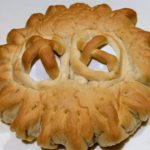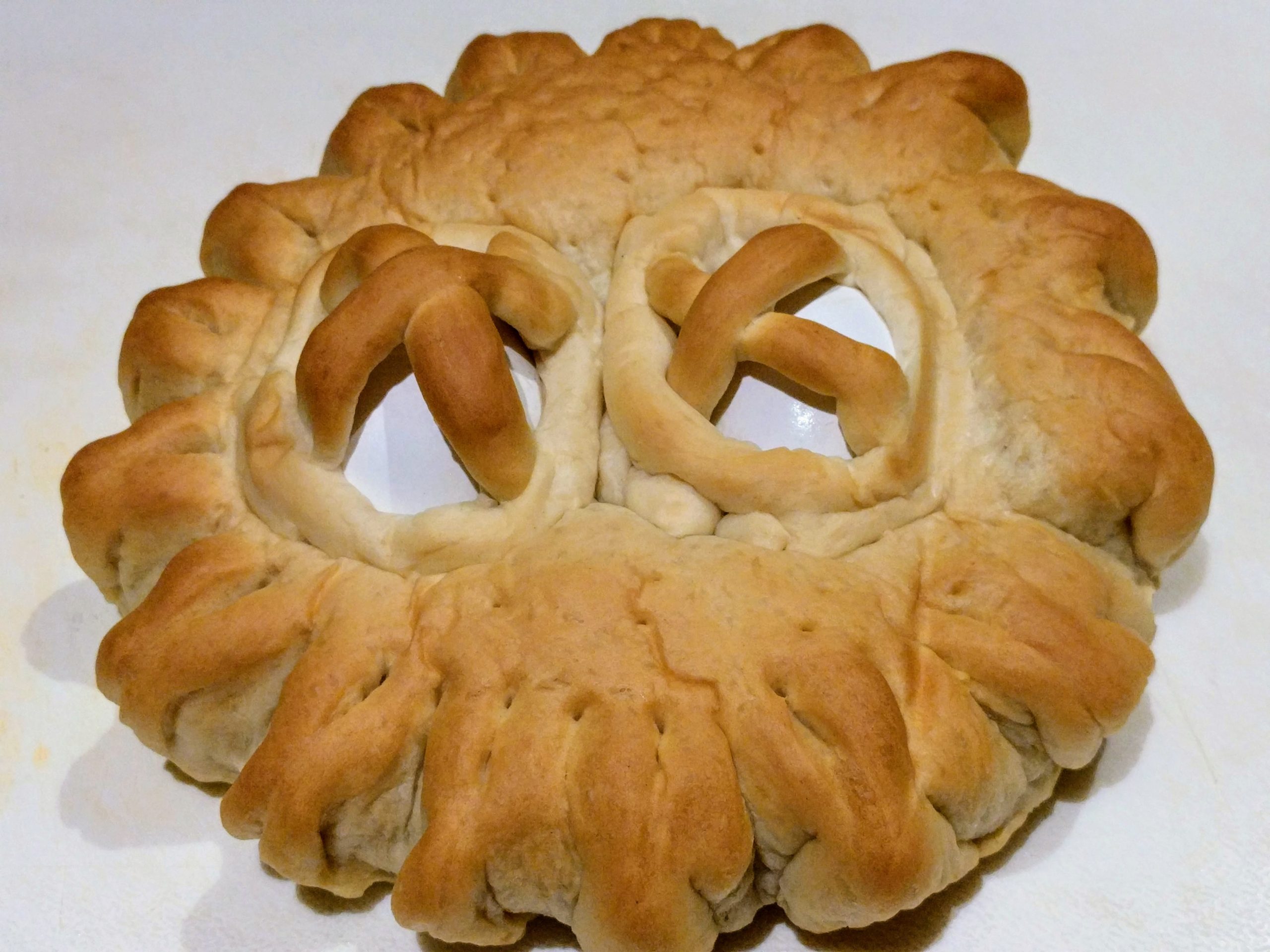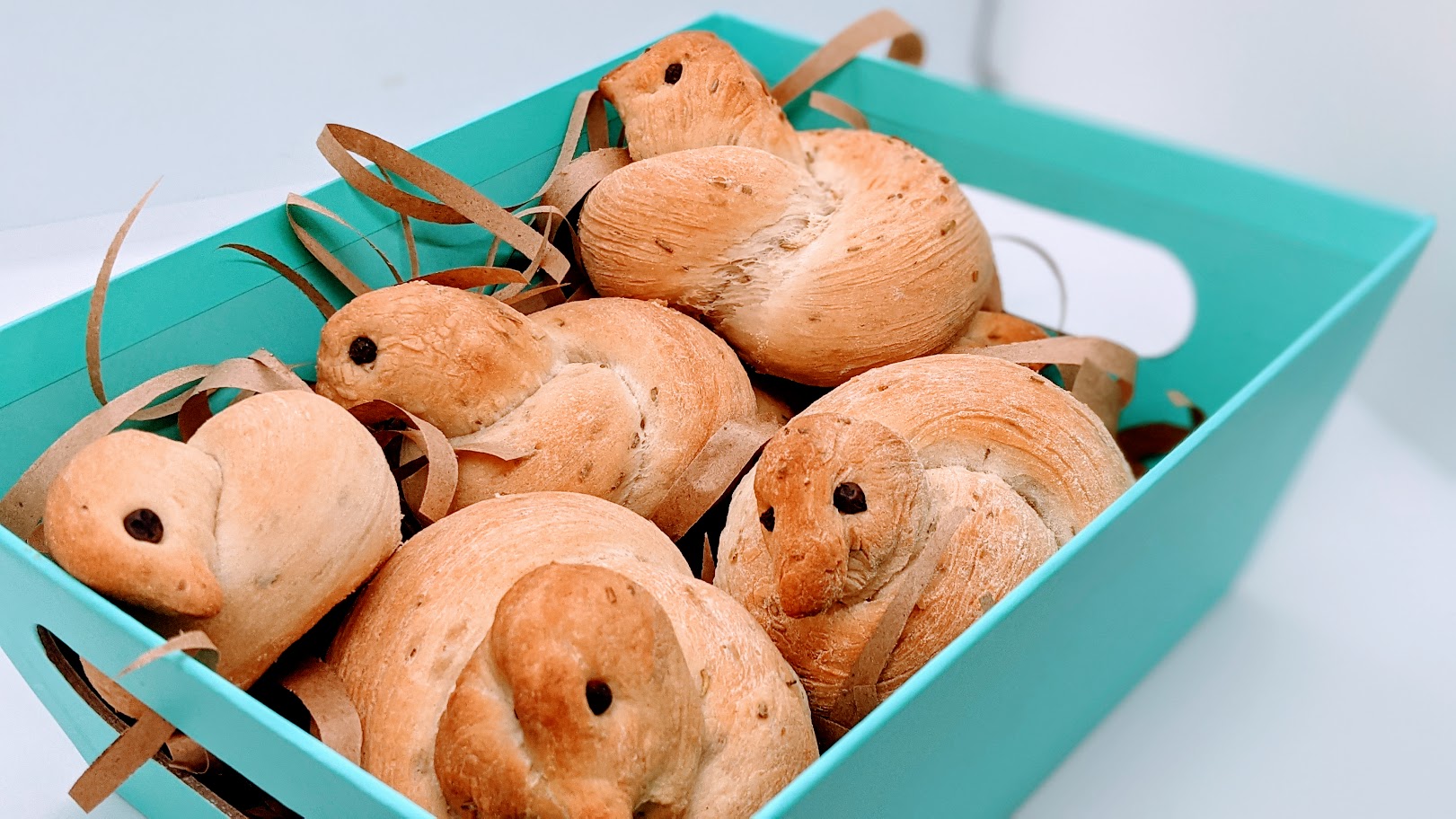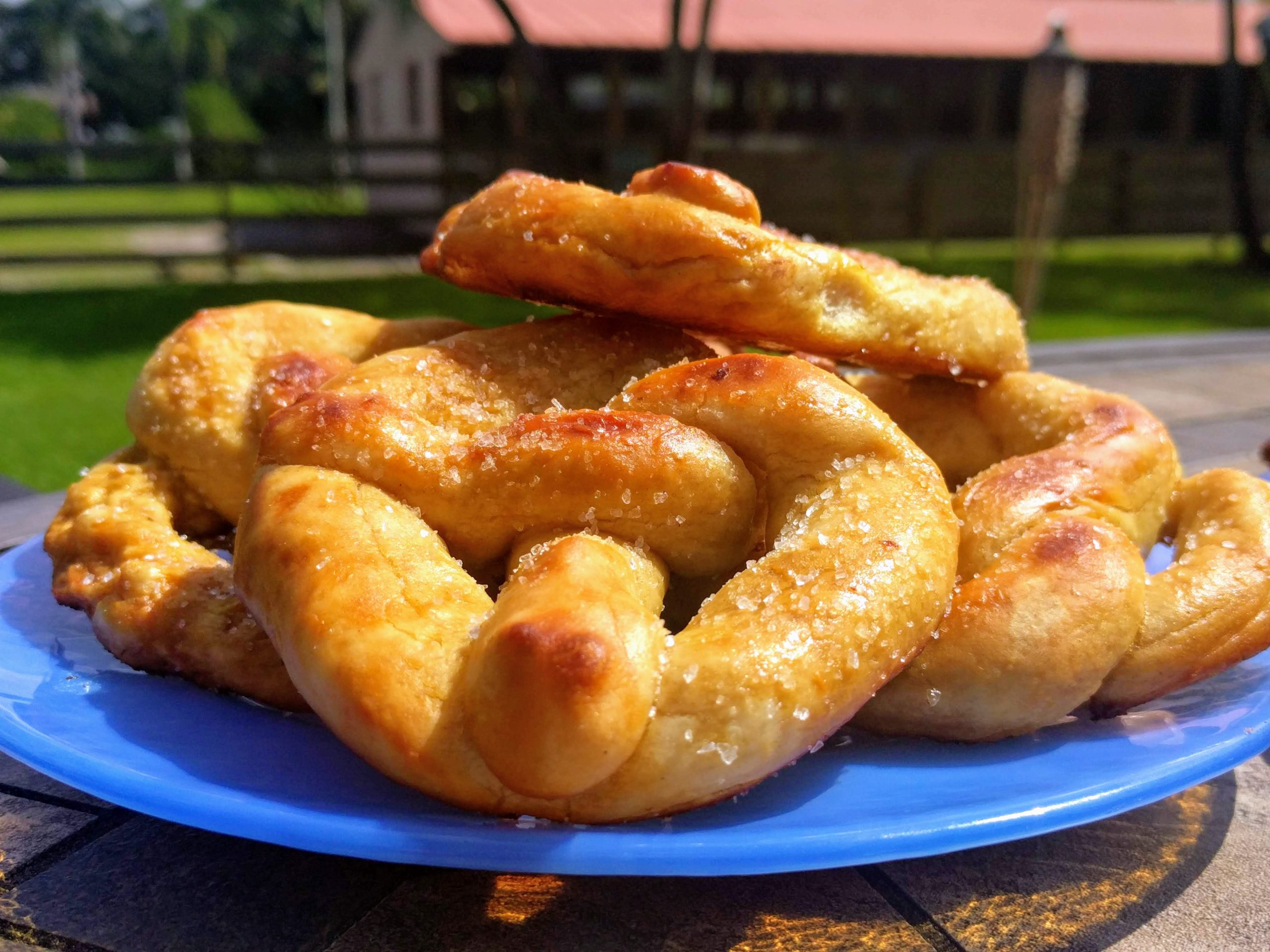This Moroccan Purim bread, Boyosa, is also known as “Haman’s Eye.” A traditional Moroccan bread, it is also known as boyoja ungola di Purim and ojos de Haman. It is a round loaf decorated with two hard boiled eggs in their shells, which are meant to represent Haman’s eyes.
Each egg is held down with two thin strips of dough arranged in an “X.” Once the bread is baked, it’s a traditional to rip them out of the loaf — like ripping Haman’s eyes out. The dough for this bread is traditionally studded with anise and sesame seeds, as well as coarsely chopped almonds
Moroccan Purim Bread “Boyosa” (boyoja, ojos de Haman) by Deanna Pool
Mama Freha’s Boyosa – written by Deanna Amar Pool
At Purim, it is my family’s tradition to eat Boyosa. A scalloped bread into which are inserted two whole eggs, it is a stylized representation of a human face, that of the hated Haman.
Taking our cue from the accursed Babylonians who gouged out the eyes of the last King of Judah, Hezeki-ah, we feel justified to mete out the same treatment to this villain.
The lessons of the Bible and the Prophets are not lost on my family who remembers and does not forget Israel’s enemies.
Story from My Mom – continued
As a little girl, I once watched my maternal grandmother Mama Freha, whose Judeo-Arabic name means Joy, as she shaped the boyosa dough into a flat circle. With a razor blade, she cut slits all around the edge of the bread, then seizing three pieces of dough at a time, she crimped them together.
To insure it will cook thoroughly, she pricked the surface of the bread with a fork, and pressed into its center, one egg or two that she had pre-soaked in lukewarm water. She held the egg in place by crisscrossing two thin strips of dough over it, then circled it and the crisscross with another strip.
She set the boyasa on large wood baking boards that she covered with a white cloth and waited for the baker’s helper to come. He announced his arrival with the call of “Hamal”, an Arabic noun, describing him
as “Bearer of Burden.”
My Mom’s Grandmother
Under the watchful eye of my grandmother, the maids placed the baking boards upon his arms and his turbaned head, counted out and gave him the appropriate amount of money due the baker and off he went to the communal oven. When he brought back the baked bread he was paid for
his services in money and in kind.
Once, at the Louvre, I stood before a wall of glazed tiles that long ago adorned the royal palace of Sushan. Etched or carved upon the tiles were life-size statues of sentries. I noticed their beards, carefully curled and it suddenly occurred to me. Is that what my grandmother was trying to achieve as she carefully crimped the dough and curled it upward?

I have carried on the tradition of the boyosa with love and pride as well as in remembrance of my maternal grandmother whose culinary talents I still admire.
Enjoy the Moroccan Purim Bread “Boyosa” (boyoja, ojos de Haman)!

Check out my other Purim recipes here.
Read more about Purim traditions here.

Moroccan Purim Bread Recipe – Boyosa (Boyoja, Ojos de Haman)
DESCRIPTION
INGREDIENTS
Ingredients:
- 1 cup water (warm )
- 1 tablespoon yeast
- 3 cups white bread flour (optional: 2-1/2 cups white bread flour and 1/2 cup whole wheat flour)
- 3 tablespoons olive oil
- 1 teaspoon salt
- 1 tablespoon rosemary (fennel or anise seed)
INSTRUCTIONS
Preparation:
- Pre-heat oven at 325 degrees.
- Dissolve the yeast in warm water.
- Put the next four ingredients in a food processor or mixer, add the dissolved yeast, and blend the mixture until the dough no longer adheres to the sides of the bowl.
- Remove the dough from the processor or blender and knead it until it is smooth. Let it rise covered for 30 minutes in a warm place.
- Knead it down for a few minutes. After you remove the dough, let it raise for approximately 30 minutes.
- Split the dough into two halves and roll out each half until it is the size of a pie pan.
- With a pair of scissors cut vertical slits around the outside edge of the bread every 1/4 inch. Crimp 3 pieces of dough together. With a fork, prick the surface of the bread,
- Then press 2 eggs (pre-soaked in lukewarm water or pre-cooked) into each round loaf (where eyes would be positioned on a face).
- Hold the egg in place by crisscrossing 2 thin strips of rolled dough over it, then circle the crisscrossed egg with another thin roll of dough.
- Let rise for an additional 30 minutes.
- Bake in pre-heated oven for 15 minutes, rotate the bread and bake an additional 10 minutes or until golden brown.



